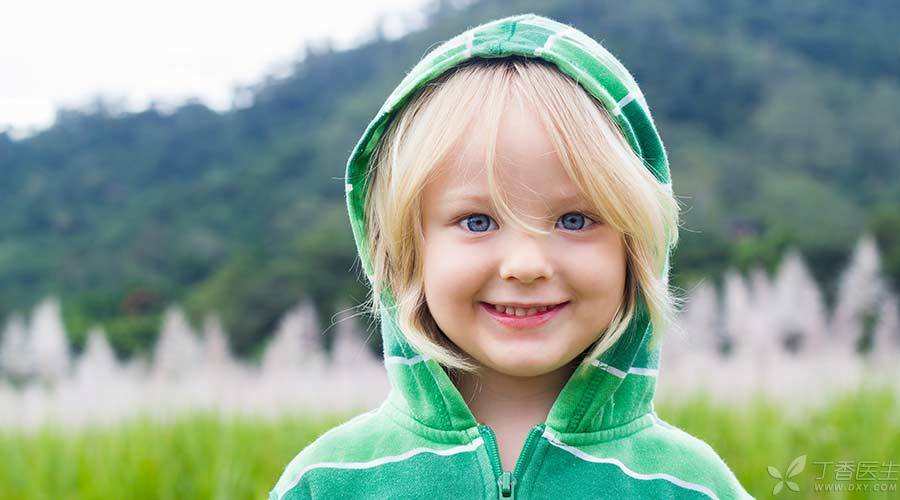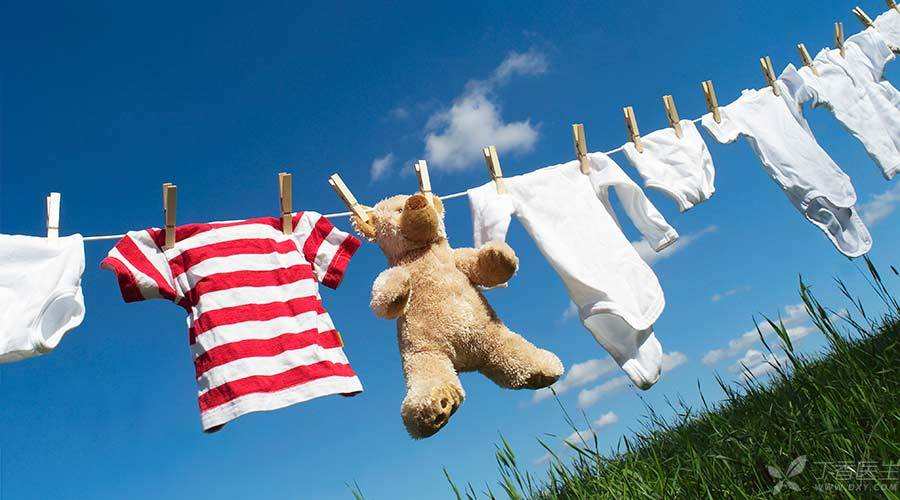
Since June 1, 2016, the “Technical Specifications for Safety of Textile Products for Infants and Children” published by the National Standardization Administration Committee has been formally implemented, explicitly requiring that no rope belts are allowed on the head and neck of clothing for infants and children under 7 years old.
Today, Ding Ma will stress again why children cannot wear clothes with ropes on their heads and necks.
How does the killing rope kill?
Looks like a pink and lovely hoodie, may become a child’s killer.
The danger lies in the pull ropes on both sides of the hat. When this inconspicuous pull rope is hooked by playground facilities, escalators, car windows or other moving objects, children can easily be strangled.
Tsinghua University Mechanics Experimental Center has done dummy simulation experiments, When the rope is suddenly stuck, the force on the rope is at least five to six times the dummy’s weight. Such a large force is enough to cause skin damage and tracheal compression, and even directly cause spinal cord injury and inability to continue breathing. The final result is hypoxia and brain death.
If a group of children play together and are pushed down the slide by other children, the strength on the rope will be greater, which will definitely be more dangerous, and even there is no way to rescue them.
This is definitely not alarmist talk!
US Consumer Goods Safety Commission Received Multiple Casualty Reports (2015 Data):
- 18 fatal incidents of jacket rope winding 56 fatal incidents of jacket neck or hat rope winding accidents on playground facilities 8 fatal incidents of waist or bottom of clothes rope dragging after being clamped by bus door
There have also been many incidents of children being killed by pulling ropes in China:
- In January 2007, when a 4-year-old girl from a kindergarten in Guangxi was playing on the slide, the button of the pull rope on her clothes and hat was stuck in the gap of the slide, and the rope caught her neck, resulting in suffocation and death. In 2011, a 3-year-old boy from Shangrao, Jiangxi Province died of suffocation due to one end of the cap rope stuck on the slide and one end wrapped around his neck. In September 2013, a 3-year-old boy from Taikang County, Henan Province died while sliding on the slide in the kindergarten. The main culprit was pulling a rope.
There are laws and regulations at home and abroad that prohibit
Because of the bitter lessons learned before, the U.S. Consumer Goods Safety Commission has issued safety standards for children’s jacket pull ropes and incorporated them into federal regulations.
According to U.S. Law, children’s jackets between the ages of 2 and 12 must not have pull ropes.
In recent years, the United States has recalled millions of children’s clothing with rope problems.
Previously, China had < < Safety Requirements for Ropes and Tape for Children’s Clothing > > and < < Safety Specifications for Tape for Children’s Jacket > >, It is recommended that the hood and neck of children’s jackets should not use pull ropes. However, the previous standards were recommended, not mandatory, and many enterprises did not follow the requirements. On the website of the Consumer Goods Safety Commission of the United States, it can be seen that many children’s hoodies with pull ropes recalled in 2014 were made in China.
The “Technical Specification for Safety of Textile Products for Infants and Children” published this time requires enterprises to enforce it, which is also the first mandatory national standard specifically for textile products for infants and children in China.
Therefore, there will be fewer and fewer children’s clothing with ropes on the neck on the market in the future. However, in order to ensure a smooth transition of the market, the standard has set a two-year implementation transition period. Inventory produced before June 1, 2016 is allowed to continue to be sold on the market, but mothers must make a detour when they see it.
Other potential safety hazards of children’s clothing
In addition to requiring children’s clothing under the age of 7 not to have any vocal cords on the neck, this standard has also added a number of safety requirements, which have been upgraded in an all-round way.
Mothers need to know about it.
1. In terms of chemical safety requirements, the standard has increased the limit requirements for 6 plasticizers and 2 heavy metals of lead and cadmium.
2. The standard also stipulates textile accessories, requiring clothing accessories to have certain tensile strength and should not have sharp tips and edges. In addition, the standard also increases the requirements for combustion performance.
3. In terms of mechanical safety, the standard specifies in detail the rope belts in different parts of children’s clothing, such as head and neck, shoulder and waist. For example, it requires that no rope belts are allowed in the head and neck of children’s clothing for infants and children under 7 years old.
4. Children’s clothing classification is clearer:
According to different ages, the standard divides children’s clothing into two categories:
It is suitable for infants aged 36 months or less to wear textile products for infants. It is suitable for children over 3 years old and under 14 years old to wear children’s textile products.
According to different safety requirements, the standard divides the safety technical categories of children’s clothing into three categories: A, B and C. Category A is the best, followed by Category B, and Category C is the basic requirement and requires:
Infant textile products shall meet the requirements of Class A. Children’s textile products in direct contact with skin shall at least meet the requirements of Class B. Children’s textile products in indirect contact with skin shall at least meet the requirements of Class C.
The standard also requires that children’s clothing should be marked with safety categories on the instructions for use, and infant textile products should also be marked with [infant products]. In the future, consumers can use the safety categories indicated on the instructions for use as a reference when purchasing children’s clothing.

There are skills in choosing children’s clothing.
When mothers buy children’s clothing for their children, they must not only focus on the above-mentioned potential safety hazards, but also consider them comprehensively from the following aspects.
Besides safety, comfort and nursing are also very important.
Easy to wear and take off
For infants, especially the baby who will not cooperate to wear and take off clothes, because the body is relatively soft, wearing and taking off clothes can be considered a big trouble. Especially all kinds of clothes with interesting appearance, you happily put the child in, only to find out in the end that if you want to take off these clothes from the baby, it is not easy and very unhappy.
Therefore, when purchasing, be sure to pay attention to whether there are enough buttons or zippers at the bottom or front of the clothes. If the clothes are pullovers, be sure to pay attention to whether the clothes at the neck are soft or elastic, so that you will not need to yank the clothes to damage the baby’s head and face in order to take off the clothes.
Easy to clean
Unless there are certain circumstances, the baby’s clothes cannot be cleaned or dried by machine, so cleaning it requires parents to spend more attention. Then, buy some clothes that are easy to wash by hand.
Comfort first
All the protruding zippers or buttons on the clothes may damage the baby’s delicate skin. When choosing clothes, be sure to pay attention to the clothes with an isolation layer between the baby’s skin and the zippers. At the same time, make sure that the edges of these zippers or elastic buttons on the clothes are round and blunt to ensure that they will not damage the baby’s skin.
Soft shoes and socks
Just like choosing clothes, the choice of socks may also make mothers make mistakes by choosing soft and warm socks. Babies’ socks often slip off, so more socks should be prepared.
Newborns and toddlers do not need to wear shoes, Some parents choose to give their babies only socks or very soft foot covers. Once they need to buy shoes for their babies, the shoes must be very soft and the opening to the feet must be large, so it will be easier to wear shoes for their babies. Of course, it is also important to remember that babies will chew shoes, so the material of shoes must be safe.
Prepenetrating examination
Although infant clothing has strict safety standards, buttons, zippers, etc. may still have some potential dangers. Before wearing, check whether there are any decorations on the clothes that are easy to hook up with the surrounding objects. Check whether the elastic fasteners and zippers of the baby’s clothes are easy to fall off and whether the accessories on the clothes are easy to loosen so as not to be swallowed by the baby by mistake.
Don’t wear too much
Infants and young children will not tell themselves how much to wear. We can refer to the following principles:
- Within one year old: children wear one more dress than adults, about the same thickness; Over one year old: children’s body temperature regulation ability is basically the same as that of adults, and they can dress like adults. More than three years old: children will express their warmth and coldness. As long as the child does not feel cold, there is no need to wear more clothes. You can also touch the palm and back of the child. If it is warm and does not sweat, it means that the clothes are more suitable.
New clothes need to be washed first.
Formaldehyde is indispensable in the process of clothing processing, which is often used to remove wrinkles, maintain color and prevent corrosion.
Therefore, new clothes often have formaldehyde residues. Although the risk of cancer is very low, it will also produce respiratory tract and skin irritation, and even cause allergy, so as much as possible before wearing should be cleaned, for clothes that cannot be washed, should be dried and ventilated in advance.
Responsible Editor: Ji Lingyan/Rouge
